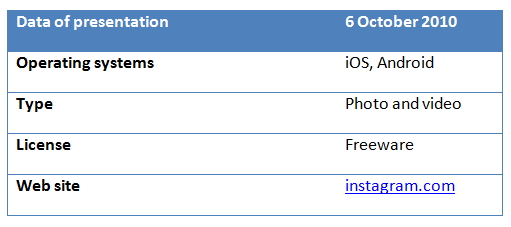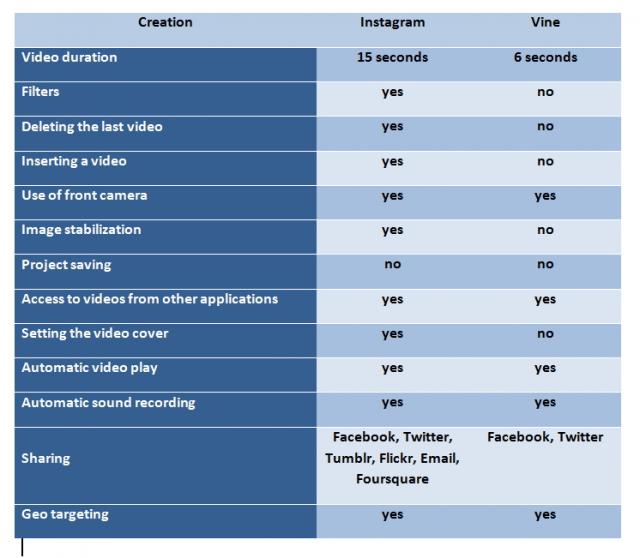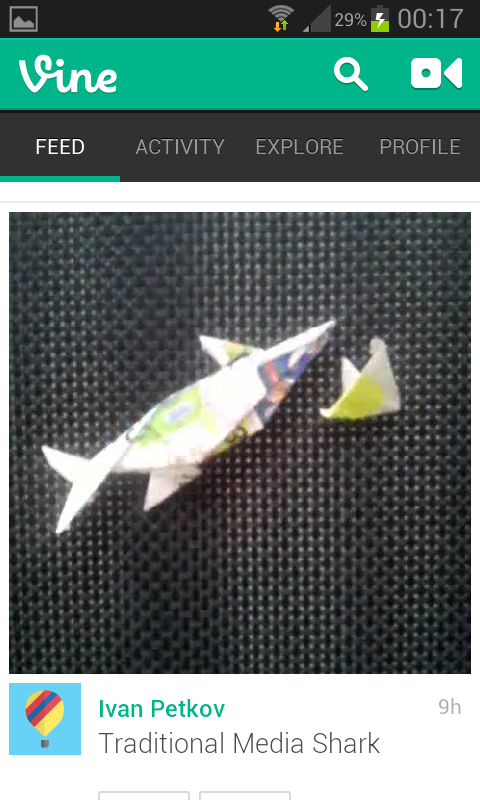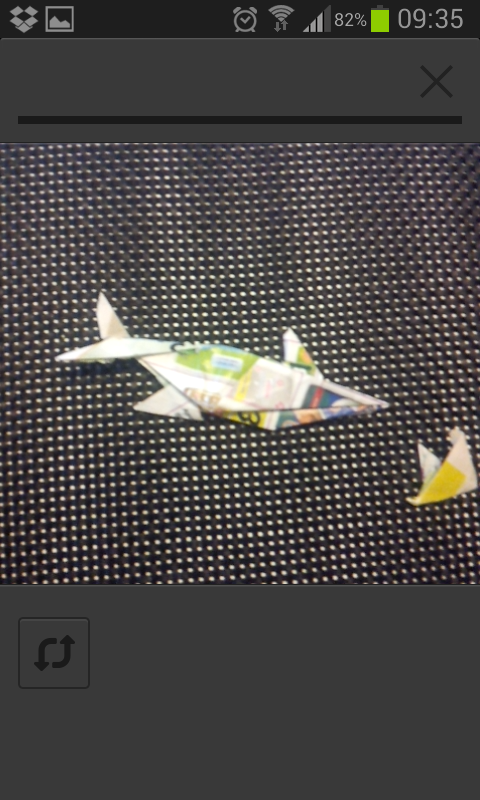Ivan Petkov
Recently, I have presented two articles to you: the first was related to documentary filmmaking and the second presented one of the most popular programs for postproduction, namely Final Cut. In the first article, I said that it is getting easier for each person to become a source of documentary content. Today, we will review two applications for mobile phones which have millions of users and turn video making into an extremely easy and accessible task because they require no additional investment in a camera or processing software and are extremely easy to use. These are Instagram and Vine. Instagram is the more popular of the two but Vine is rapidly gaining fans and has driven the development of video functionality by Instagram. I admit that I am a nonprofessional in the field and that I have always thought that these kind of applications are used to shoot cute babies, delicious dishes, exotic trips and legendary parties. There is nothing wrong with that, of course. The boom of social networks shows that a 'star' lives in each of us who is in need of attention and who wants to share his or her pieces of everyday reality with the rest of the world. Social instinct and sense of normalcy – we will not dissect this need but will directly turn to the review of the two applications.
Vine

I am beginning with Vine which, like the creeping vine, connects its rapidly growing army of loyal followers. The application definitely gives delicious fruit as well. Vine is a brand new fresh application.

Instagram

Instagram is a veteran with two years of experience but in the other big category, which is photography. It was equipped with a video functionality just a week ago. I cannot fail to point out that Facebook has acquired the company for the unprecedented high cash amount of $ 1 billion because of the 100 million users of the application.

VS-statistics


Working with Vine


Vine welcomes you with a beautiful looking video of a drifting balloon. I do not know whether the joke is deliberate but the rival Instagram uses an image of a balloon to show the available filters. You can register by mail or use your Twitter account. I used my Twitter account and the first things I saw in the application were the latest videos. A bright button appeared later inviting me to find users whose videos I could follow – the invariable social element. I hastened to open the tab containing the video recording function in order to get into the role of a producer, director and animator. Before that I had watched dozens of videos presenting the best and most interesting of Vine. I was impressed by the stop motion animation and I thought of a scenario. The button to shoot my 6-second "mega"-production was in the upper right corner. I was a little surprised when I came across an unexpectedly Spartan screen on which I should work. The only thing I could think of was to touch the screen and "Oh! My" – I started shooting. By keeping your finger on the screen, you determine how long the application will shoot. Ascetic and simple as long as it occurs to you. Vine’s developers rely on the established touch-habits of the audience. Like a friend of mine, a fierce opponent of smartphones, says "let’s speak on the screen". :-P
Below you can see what I have created in no time, after numerous trials and errors. It is definitely not easy to make animation but after a short habituation, results improve and I feel satisfied. And most importantly, I am having fun.
The media-shark
Idea and script: a traditional media-shark is chasing another victim to “swallow” it up (media market consolidation). The small traditional media fish is trying to escape and resist but it is caught and assimilated eventually. The media-shark is swimming undisturbed, standing on top of the media food chain until it is faced with an unexpected and terrifying intruder – the kraken of new media. In the end, it is caught and assimilated too. Conclusion: "There's always a bigger fish!"
PS No real traditional media fish or media shark was killed while shooting this video. The assimilation of traditional media by the kraken of new media continues with full force, for good or bad.


My judgement on Vine: Its Android version was released only a week ago and it is generally lagging behind iOS in some respects. Working with Vine is easy and fun, it provides a scope for creative expression and features some original videos. I see the application as the king of short advertisement. You will be surprised how much you can fit in 6 seconds. The disadvantages I would point out are: there is no video deleting option which means that you should be careful what you are uploading, there is no option for saving projects for further processing, there are no filters. All this means that the application is going to develop but even in this simple form, it is a great tool for people who can think outside the box. I did not encounter any problems with the application except that a message to try again interrupted the uploading of the video several times. And last but not least - this is a typical mobile application attempting, at least for the moment, to build a community of active smartphone users. If you are not one of them, you will have no access to Vine and will have to rely on its users sharing a video on their profile on a social networking web site or blog.
Working with Instagram


Instagram has existed for two years now and, as already mentioned, this is evident. The application offers a lot more at present. Of course, if you are not familiar with it you will perceive the various screens in a different way. The difference is obvious when you start using the application. On the other hand, the video making option is brand new and this is obvious too. It lacks the precision to control the duration of filming. I tried to make a stop motion animation and saw a message that the button that activates the recording should be held. Maybe it is a matter of habit, but being a person with no experience in this kind of activities, working with Vine was easier for me. I will add here that I had purposely used Instagram after Vine. Certainly, the power of video recording in Instagram is in the production of "traditional" videos in which there is a continuous and linear shooting of a scene. Instagram allows you to delete the last series of frames in the case that you are making a video by shooting in several sessions. It offers more video processing options which, I think, are very well developed. You can choose the title of the video by a slider that shows to which part of the video the corresponding frame belongs.


Here's what I have created using Instagram:
A meeting in the ocean
Idea and script: I decided to develop the theme with the traditional media-shark. It is again chasing its next victim but this time a whale-smartphone starts chasing it. The conclusion about the bigger fish here stands by itself. I would like to think that the majority of traditional media would be able to successfully adapt to new technologies. It is a matter of survival. In practice, reading a "newspaper" on a tablet or smartphone offers more opportunities, but it does not make a great difference. A screen replaces paper. So, there is no cause for panic.
My judgement on Instagram: The application is 2 in 1. It has no rival in terms of popularity as regards pictures. Five million videos were uploaded on the Instagram network in just 24 hours. The development team has tried to offer something different from Vine, not only in terms of duration but also in terms of functionalities, and mostly in terms of shooting. I would not mind more precise control over the camera button to make animations too. What I did not like while working with Instagram was that it had crashed several times. While I was trying to save the video and share it on Twitter, the application “fell asleep” so much that I had to reboot my phone. There were no such problems while I was uploading the video on the servers of Instagram. I cannot say whether it was Instagram or Twitter’s fault but I am sure that a solution will be found. I also consider the fact that Android applications encounter more problems because of the diverse hardware. The website of Instagram offers the opportunity to log in to your account, but you should have one, which you can create via the mobile application. There is again "discrimination" as regards those users who do not use a smartphone.
Both applications show the direction in which the social services for sharing copyright videos (and photos) will develop. I emphasize the copyright requirements. These kind of applications are tools that allow many people with good ideas and imaginative thinking to realize and share them with the world. The advantage of Vine is the short form and good control over the recording, which are a prerequisite for more originality. Vine requires more time, like in the saying, "I am writing you a long letter because I have no time for a short one." Instagram does have a large number of users and offers a more traditional recording, which is suitable for "home videos". We could say that, at this stage, both applications are adding to each other rather than competing. If you have a smartphone and a spare half an hour at least, I recommend that you try them out.